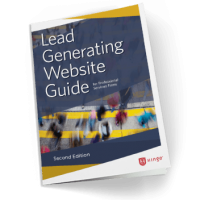Let’s face it, marketing resources—whether part of a large or small team—only have a certain amount of bandwidth each month to build or strengthen their brands, generate leads or demand, enhance their customer experiences, or to reach all of these goals.
For many, the ultimate goal is to help increase/improve opportunity engagement throughout their funnels or pipelines.
Unfortunately, to achieve these goals, marketers often have to adjust, adapt, and accelerate their marketing strategies and plans. Reaching the right buyers (especially C-suite) is getting harder and harder. Traditional and digital marketing and sales tactics aren’t working as well as they once did.
- Buyers don’t pick up the phone or return calls as much as they once did. TOPO notes that it can take up to 18 calls to reach a buyer.
- Buyers are not opening emails and clicking on links as much these days. Campaign Monitor reports that the average email open rate is 21.5%.
- Buyers may not be at your conference or stop by your booth. Conferences and trade shows are getting more expensive as destinations to attend or to exhibit.
- Buyers are leveraging less referrals. According to a study from the Hinge Research Institute, Inside the Buyer’s Brain, Third Edition, the use of referrals as a search method has dropped by 15% over the last few years. Buyers are also making fewer referrals. The rate of actually making a referral is down almost 5% over the last few years.
Marketers must be as effective and efficient as possible with the resources, time, and budget that they have. This is where ABM can help. The Alterra Group reports that ABM shows a higher ROI than other marketing activities. ITSMA takes it further noting 87% of marketers that measure ROI say ABM outperforms every other marketing investment.
This is why a B2B, account-based marketing (ABM) strategy must be a priority for you. Why wouldn’t you prioritize account-based marketing tactics over other less effective, traditional and digital means? According to SiriusDecisions, 92% of B2B marketers worldwide consider ABM “extremely” or “very” important to their overall marketing efforts. Need more proof, read on…
“87% of marketers that measure ROI say ABM outperforms every other marketing investment.” ITSMA
Times Have Changed for B2B Marketers
Gone are the days of sending out one universal message to the world and expecting a high level of engagement and buying. Personalization and customization are the names of the game now to be effective. Today’s buyers and clients are savvier than in days gone by. They do research on everything. They read blogs, recognize automated messages, listen to podcasts and webinars, and more. They are enlightened. They conduct searches online and don’t ask for referrals as much. They want to hear from sellers who have done their homework and know their businesses, challenges, goals, etc. They want to talk with sellers who are genuine—sellers who can add value to their buying journeys with tailored, not canned responses. They are looking for trusted advisors.
Have you ever received an email or LinkedIn message from someone who was attempting to personalize but got your personal or company name wrong? I have this happen to me a few times a month. Needless to say, those sellers do not get very far with me.
Also, keep in mind that, contrary to your some of your team’s thinking, your products or services do not fit or appeal to everyone. Even, if by some small miracle, you do have that unicorn product or service, you should prioritize the audiences you are trying to reach. Focusing your messaging and selling will help your company or firm be more effective and is a key pillar of ABM. Before I go much further with B2B, account-based marketing, let me define what it is so that we are on the same page.
What is B2B, Account-Based Marketing (ABM)?
At Hinge, we believe that ABM is a scalable and layered strategic approach to marketing and sales that leverages different levels of targeted and personalized messaging to engage with a specific prospect or customer/client (account) during an experience or journey. The processes and tactics of ABM have been around for decades in one form or another. What makes ABM different is the technology now available to leverage account segmentation, behavior, orchestration, and reporting.
Our definition of Account-Based Marketing includes the alignment and orchestration of not only Marketing and Sales teams but the Executive, Sales Development, Customer Success, Product Development, and other teams that engage with prospects and customers/clients. It brings together targeted accounts, data-driven programs, and personalized buyer experiences into a coordinated outreach. Some call this broaden approach “Account-Based Everything” or “ABX.”
Many marketers came up through the ranks learning to develop and maintain a marketing and sales funnel or waterfall where the focus is placed on generating a high volume of awareness and leads at the top of the funnel, nurturing a portion of them into demand, and converting a smaller subset of that demand into opportunities and then closing them. With ABM, that funnel approach is flipped. As organizations such as FlipMyFunnel have promoted, with the flipped funnel, the focus is on targeting a small set of accounts, mapping and engaging key decision makers, and then creating relationships that lead to more opportunities and revenue. (See Figure 1.)

Figure 1: The Traditional Funnel and the FlipMyFunnel Funnel
The traditional funnel focuses on number of leads generated and the number of leads passed to Sales. The flipped funnel focuses on identifying key accounts and the number of meetings (engagement) with key decision makers.
A Striking Benefit of B2B Account-Based Marketing
As I discussed earlier, ABM tactics often outperform every other marketing tactics. The ROI is dramatic and makes a compelling case for any marketer. But the differentiator that I think will capture the attention of any corporate or firm leadership team will be the significant impact on revenue.
SiriusDecisions reports in one of its State of ABM studies that “91% of companies using ABM were able to increase their average deal size.” Moreover, 25% of the respondents stated that their revenue increase was over 50%!
Independently, research from TOPO and the ABM Leadership Alliance, and reported in ABM in Action, shows that companies that have implemented ABM saw a 171% increase in their Annual Contract Value (ACV). (See Figure 2.)
From Gartner’s perspective, its research shows that ABM programs provide a 70% increase in opportunities created.

Figure 2: ACV lift after implementing ABM
“25% of the respondents stated that their revenue increase was over 50%.” SiriusDecisions
Don’t Skip Addressing Considerations
Hopefully, if you have reached this point, you are pretty excited about ABM and what it can do for your company or firm. Now, a shot of reality. To be successful at account-based marketing, you have to address a lot of considerations. That is why it is so important to start on our strategy now. Imagine you are custom building a new home. Your strategy is your blueprint. You wouldn’t invest a lot of time, money, and resources into building a new home if you didn’t have a detailed blueprint. Beyond that, what types of windows will you have, what will the flooring look like, how much tilework will there be, will there be smart house features? It’s all about the details and who will do the work. Will you be doing any of the carpentry, plumbing, electric, drywall, painting, masonry, etc.? Will you be using any contractors or specialists on this custom home? Will you have a general contractor to drive the blueprint/strategy? Even if you want to do a lot of this with internal resources, you should still use an ABM consultant to guide you through the strategy, help you apply best practices, and avoid known pitfalls.
The same holds true for your ABM initiative. You’ve got considerations such as buyer personas, target account lists, change management, playbooks, data management processes, account plans, cross-functional account team organization, content, offers, campaign design, personalization, events, account mapping, internal collaboration and communications, and more.
Then there are channel considerations. Email. Direct Mail. Account-Based Advertising. Social. Phone Calls. Inbound. Outbound. Metrics. Reporting. You don’t have implement all of these considerations, but I think it is well worth going through the exercise of addressing the considerations. Then you can scale your ABM program based on resources, budget, timelines, and more. It is best to start out with a small pilot program that you can grow and optimize in phases.
A Couple of Tips/Caveats
There is no doubt that a well-planned Account-Based Marketing strategy can have a dramatic, positive impact on ROI and revenue in ways few other marketing strategies can. However, be patient. Set realistic expectations based on your average sales cycle and the skill sets of your team members. While your strategy will be well-intention, it will not be coming out of the gate fully optimized. You will gain insights along the way. Changes will occur to the program—Just like with that custom-built house, you will find changes will occur to your ABM program. The exciting part is that if you stick with the program, you will eventually see the optimization kick in and the bigger payoffs occur.
Speaking of learning from previous tactics, I would recommend that you make sure that your company or firm has a strong brand, key differentiators, and solid positioning before proceeding to ABM. I have seen several clients move ahead only to hit a brick wall when target accounts did not engage—even with the higher level of personalization. Consider your brand a foundation piece to your ABM.
Another foundational piece is a good, high-performance website. The website, custom landing pages, messaging, etc. will tie directly to your other ABM tactics. Nothing stops a possible ABM deal faster than a website that is too slow, too hard to navigate, too vague, or too old (out of style).
Why You Need to Prioritize A B2B, Account-Based, Marketing (ABM) Strategy Now
The B2B marketing world is changing fast. ABM has been proven to work—and work well. You need to commit to ABM today even if you do not implement a strategy and program for a year or more. Planning now will ensure a higher level of success tomorrow. This piece was not designed to be a comprehensive guide to ABM. In fact, its purpose was to specifically focus on the compelling metrics and data to get you to raise ABM as a priority.
Use this piece to get excited and motivated. Keep in mind that your results may vary—especially if you have never created and implemented an ABM strategy before. Start discussions with different teams to get buy-in. Do research online or by talking with ABM practitioners or industry analysts. Now you know what is possible. In the near future I would like to address how to build out an account-based marketing framework. The key to ABM success is to coordinate and unify traditional and digital marketing tactics—and then execute, communicate, measure, and optimize..
“Companies that have implemented ABM saw a 171% increase in their Annual Contract Value (ACV).”
TOPO
How Hinge Can Help
Your B2B website should be one of your firm’s greatest assets. Our High Performance Website Program helps firms drive online engagement and leads through valuable content. Hinge can create the right website strategy and design to take your firm to the next level.
Additional Resources
- Download a free copy of the Lead Generating Website Guide for a high-level overview of the Lead Generating Website concept
- Check out our webinar, How to Build the Perfect Professional Services Website and learn how your website can produce a dependable flow of qualified leads and new revenue.


